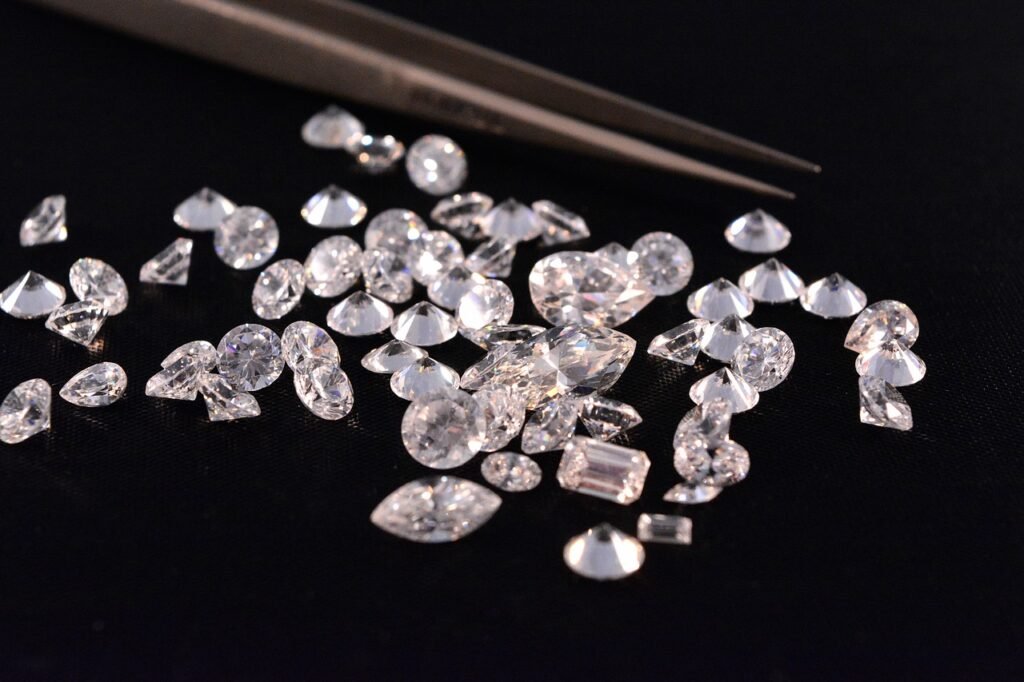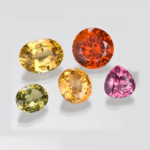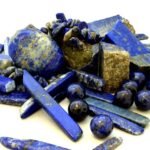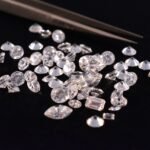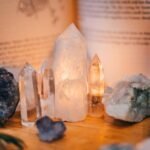Introduction to Diamonds
Diamonds are the most famous and desirable gemstones in the world, celebrated for their unmatched brilliance, durability, and timeless charm. Known as the April birthstone, a diamond is not only a symbol of luxury but also of eternal love and strength. For centuries, people have cherished diamonds for engagement rings, wedding jewelry, and investment purposes. Beyond beauty, diamonds are the hardest natural substance on Earth, making them both a geological marvel and a cultural treasure. Their enduring popularity makes them the king of all gemstones.
History and Symbolism of Diamonds
The history of diamonds spans thousands of years, with ancient civilizations in India being the first to mine and trade them. The word “diamond” originates from the Greek adamas, meaning “unconquerable” or “indestructible.” Throughout history, diamonds have been associated with divine powers, strength, courage, and protection. Kings and rulers wore them as talismans, believing they could ward off evil and bring victory in battle. In modern times, diamonds symbolize purity, wealth, and everlasting love, making them the ultimate gemstone of passion and commitment.
Diamond Colors and Their Meanings
Most people associate diamonds with a classic colorless sparkle, but they actually come in a wide spectrum of colors. The Gemological Institute of America (GIA) grades them from D (colorless) to Z (light yellow or brown). Fancy-colored diamonds, such as blue diamonds, pink diamonds, and black diamonds, are even rarer and more valuable. For example, pink diamonds symbolize romance, while yellow diamonds represent happiness and prosperity.
Types of Diamonds: Natural vs. Lab-Grown
Natural Diamonds
Natural diamonds are formed deep within the Earth under immense heat and pressure over billions of years. These diamonds are the most coveted, representing rarity and authenticity. Known for their sparkle and timeless beauty, natural diamonds are mined in countries like Botswana, Russia, and South Africa. Each stone is unique in terms of clarity, cut, and color, making natural diamonds the traditional choice for engagement rings and luxury jewelry.
Lab-Grown Diamonds
Lab-grown diamonds, also known as man-made or synthetic diamonds, are created using advanced technology that replicates the Earth’s natural formation process. They are chemically and physically identical to natural diamonds but come at a lower cost. Lab diamonds are gaining popularity due to their ethical sourcing and eco-friendly production. Buyers often choose lab-grown diamonds as a sustainable alternative while still enjoying the sparkle and brilliance of a real diamond.
Fancy Color Diamonds
Fancy color diamonds are among the rarest gemstones in the world, displaying colors like blue, pink, yellow, green, and even red. Unlike traditional white diamonds, their value increases with the intensity of their color. Famous examples include the Hope Diamond (blue) and the Pink Star Diamond (pink). Collectors prize fancy diamonds for their rarity, while jewelry lovers admire them for their vibrant beauty. Each fancy-colored diamond carries symbolic meanings, such as romance, joy, or mystery, making them unique statement stones.
Industrial Diamonds
Industrial diamonds are lower-quality stones that are not suitable for jewelry but are highly valuable in industries. Thanks to their hardness, they are used in cutting, drilling, grinding, and polishing tools. These diamonds play an essential role in construction, technology, and scientific research. While they may not shine in jewelry stores, industrial diamonds are crucial for modern innovation and infrastructure.
Benefits and Healing Properties of Diamonds
In addition to their beauty, diamonds are believed to have many healing and spiritual benefits. They are said to enhance confidence, clarity of mind, and inner strength. In astrology, diamonds are associated with the planet Venus, symbolizing love, luxury, and harmony in relationships. Many believe wearing a diamond attracts prosperity, success, and emotional balance. Diamonds are also thought to amplify energy, making them powerful for meditation and spiritual growth. This combination of beauty and mystical benefits makes diamonds even more special.
Famous Diamonds in History
Some diamonds have legendary status:
- Koh-i-Noor Diamond – A 105-carat gem, part of the British Crown Jewels.
- Hope Diamond – Famous for its deep blue hue and mysterious history.
- Cullinan Diamond – The largest gem-quality diamond ever found, cut into several pieces that now sit in the British Crown Jewels.
These gems continue to inspire fascination worldwide.
Diamond Colors and Their Meanings
While most people associate diamonds with being clear and colorless, they actually come in a wide range of hues. The GIA diamond color grading scale ranges from D (completely colorless) to Z (light yellow or brown). The purest white diamonds are the most valuable, but fancy-colored diamonds are prized for their rarity and brilliance. Blue diamonds represent loyalty and truth, pink diamonds symbolize romance and femininity, yellow diamonds bring joy and prosperity, and black diamonds are associated with power and mystery. Each color carries its own emotional and symbolic meaning, adding depth to its beauty.
Diamond Cuts and Shapes
Diamonds are cut into different shapes, each with its own charm:
- Round Brilliant Cut – The most popular and sparkliest cut.
- Princess Cut – Square shape with a modern look.
- Emerald Cut – Elegant rectangular step-cut.
- Cushion Cut – Rounded square, vintage appeal.
- Oval, Pear, and Marquise Cuts – Stylish alternatives with unique brilliance.
The cut plays a huge role in both appearance and price, making it an essential factor for buyers.
Diamond Clarity and Quality
Clarity is one of the most important factors when evaluating a diamond’s quality. It refers to the presence of internal inclusions or external blemishes, which can affect a diamond’s sparkle. The Four Cs of diamonds cut, color, clarity, and carat weight determine its value and beauty. Among these, the cut is the most crucial factor, as it controls how well the diamond reflects light. A flawless or internally flawless diamond is extremely rare and highly valuable, while slightly included diamonds offer beauty at more affordable prices.
Diamond Cuts and Shapes
Diamonds are cut into different shapes, each with its own personality and brilliance. The round brilliant cut is the most popular, known for maximizing sparkle. The princess cut is square-shaped with a modern edge, while the emerald cut has an elegant rectangular look. Cushion cut diamonds are vintage-inspired with rounded corners, and oval, pear, and marquise cuts are trendy for their unique charm. Each shape appeals to different tastes, and the right cut enhances both the beauty and value of the diamond. Choosing the perfect cut allows buyers to match a diamond with their style and personality.
How Much Are Diamonds Worth?
The value of a diamond depends on size, rarity, and the Four Cs. On average, a 1-carat diamond can range from $3,000 to $10,000, but rare diamonds can sell for millions. Fancy-colored diamonds such as pink, blue, and red are even more valuable, with some stones like the Pink Star Diamond fetching over $70 million. Large flawless diamonds are considered excellent investments, as their value continues to rise with demand. Whether purchased for love, fashion, or investment, diamonds remain one of the most valuable gemstones in the world.
Diamond as the April Birthstone
As the birthstone for April, diamonds represent strength, purity, and eternal love. People born in April are believed to gain good fortune, health, and protection by wearing diamonds. This makes diamonds a popular gift for birthdays, anniversaries, and other milestone celebrations. Engagement rings featuring diamonds have become a global tradition, symbolizing everlasting commitment. As April’s gemstone, diamonds perfectly capture the qualities of resilience, brilliance, and timeless beauty.
Famous Diamonds in History
Some diamonds have legendary status due to their size, beauty, or mysterious history. The Koh-i-Noor Diamond, weighing over 100 carats, is part of the British Crown Jewels. The Hope Diamond is famous for its rare blue color and stories of a curse. The Cullinan Diamond, the largest gem-quality diamond ever discovered, was cut into several stones that now adorn the British Crown. These iconic diamonds continue to inspire fascination and are reminders of the gem’s incredible legacy.
Symbolism of Natural Diamonds
Throughout history, diamonds have symbolized eternal love, strength, and purity. Their unmatched durability makes them the ultimate representation of unbreakable bonds, which is why they are the most popular choice for engagement rings and wedding jewelry. In many cultures, natural diamonds are also considered stones of prosperity and protection, believed to bring clarity, courage, and abundance to the wearer. The diamond’s sparkle has inspired legends of divine light, making it a gem that not only enhances beauty but also carries deep emotional significance. Owning a natural diamond is more than a luxury—it’s a timeless connection to history, romance, and meaning.
Ethical Sourcing: Ensuring Your Natural Diamond Is Conflict-Free
While natural diamonds are beautiful and valuable, their sourcing has not always been ethical. In the past, conflict diamonds (or blood diamonds) were mined in war zones and used to finance armed conflict. Today, the Kimberley Process has been established to prevent the sale of conflict diamonds by requiring diamonds to be certified as conflict-free.
Buying Guide: How to Choose the Perfect Natural Diamond
When purchasing a natural diamond, it’s important to focus on the famous 4Cs – Cut, Color, Clarity, and Carat Weight. The cut determines brilliance and sparkle, while color ranges from completely colorless to light yellow or brown. Clarity refers to internal inclusions or surface blemishes, and carat weight measures the diamond’s size. Always request a certification from trusted gemological laboratories like GIA or IGI to ensure authenticity and value. Additionally, decide whether you prefer a round brilliant cut diamond for maximum sparkle, or fancy shapes like oval, princess, emerald, or cushion diamonds for a unique look. Comparing these factors side by side will help you choose a diamond that matches both your budget and personal style.
How Diamonds Are Formed: Nature’s Miracle
Diamonds are formed deep within the Earth’s mantle, around 100 miles below the surface. Under extreme heat and pressure, carbon atoms bond together in a crystal structure that makes diamonds the hardest natural substance. Over billions of years, volcanic eruptions bring them closer to the surface, where they can be mined. This natural process makes every diamond a geological miracle, with each stone representing billions of years of Earth’s history.
Why Choose Natural Diamonds? Find Out Here!
Here are a few key reasons to choose natural diamonds over lab-grown diamonds:
Rarity and Uniqueness
Natural diamonds are extremely uncommon because they are created under extreme heat and pressure deep below the Earth over billions of years. Similar to a fingerprint, every natural diamond is different, possessing unique inclusions and qualities. Their emotive significance and appeal are enhanced by their uniqueness and rarity.
Proven Long-Term Value
Natural diamonds are a wise investment since their value has steadily held up over time and even increased. Over the last 35 years, there has been an average annual increase of 3% in the price of natural diamonds. In contrast, as manufacturing rises, the cost of lab-grown diamonds keeps going down.
Supporting Mining Communities
Over 10 million people throughout the world depend on the natural diamond business for their livelihood, with 80% of the profits going to the areas where the diamonds are mined. Purchasing natural diamonds supports these local economies.
Exceptional Durability
With a Mohs hardness of 10, natural diamonds are the hardest known substance found in nature. They are therefore extraordinarily resilient to scratches and durable. The extreme heat and pressure that they create over billions of years is what gives them their extraordinary toughness.
Timeless Symbolism
For generations, diamonds have served as emblems of devotion and love. The value of a natural diamond as an enduring symbol of your connection is further enhanced by its extraordinary journey from deep below the Earth to your loved one’s finger.
Natural diamonds provide unparalleled durability, centuries of significance, community support, proven worth, rarity, and affordability compared to lab-grown diamonds, which are also more sustainable. In the end, it boils down to priorities and personal preference. But natural diamonds are still the traditional option for individuals looking for the utmost in value, individuality, and significance.
The Hidden Marvel of Nature is the Birth of Diamond Gemstones.
Formation Process: Deep under the Earth’s mantle, a remarkable journey begins for natural diamonds. When exposed to extreme pressure and heat, carbon atoms organize themselves into the crystal lattice structure that characterizes diamonds. This complex process takes place over a period that is too long for the human mind to process.
Volcanic Journey: Certain diamonds are driven to the Earth’s surface by volcanic eruptions, setting off on a volcanic journey. Through this process, diamonds are turned from undiscovered gems into the sought-after jewels we admire.
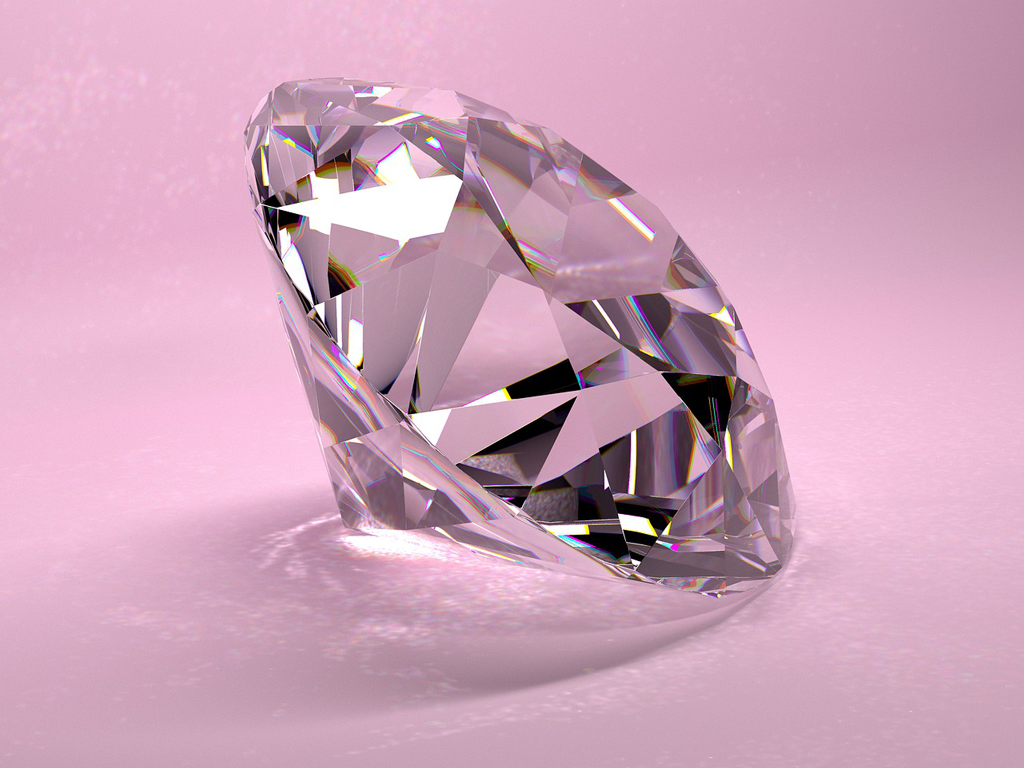
Factors Affecting Diamond Prices
The 4Cs – Cut, Color, Clarity, and Carat
The diamond price depends on its cut, color, clarity, and carat weight. Higher clarity diamonds with minimal inclusions command premium prices. 1 carat diamond rings, 2 carat diamond rings, and 3 carat diamond rings are priced based on their rarity and quality. Fancy-colored diamonds such as pink diamonds and blue diamonds are even more valuable due to their scarcity.
Diamond Earrings and Jewelry Trends
Diamond Earrings for such as people
From diamond stud earrings to diamond hoop earrings, there are endless choices for both such as people. Lab-grown diamond earrings and black diamond earrings are gaining popularity due to their unique appearance and affordability. For those looking for everyday luxury, diamond huggie earrings offer a sleek and modern touch.
Diamond Necklaces and Bracelets
A diamond tennis necklace or diamond bracelet adds timeless elegance to any outfit. Diamond pendant necklaces are also a popular choice for everyday luxury. Eternity bands featuring diamonds encircling the entire ring symbolize everlasting love and commitment, making them ideal anniversary gifts.
Caring for Your Natural Diamonds: Tips for Longevity
To maintain the brilliance of your natural diamond jewelry, proper care is essential. Clean your diamonds regularly using mild soap, warm water, and a soft brush to remove dirt and oils that can dull their sparkle. Store them separately in a soft-lined jewelry box or pouch to prevent scratches, since diamonds can scratch other gemstones and even each other. Avoid exposing your diamonds to harsh chemicals like bleach or chlorine, which may damage the setting. It’s also wise to have your jewelry checked by a professional jeweler at least once a year to ensure the stone is secure and the setting is in good condition. With proper care, your diamond will retain its radiance and brilliance for generations.
FAQs About Natural Diamonds
A real diamond shows sharp brilliance, resists scratching, and disperses light uniquely. Certification from a trusted lab confirms authenticity.
The 4Cs stand for Cut, Color, Clarity, and Carat, which determine beauty and price. Together, they are the global standard for diamond grading.
Natural diamonds form deep in the Earth’s mantle under extreme heat and pressure. The process takes billions of years before they reach the surface.
Diamonds range from colorless to fancy colors like yellow, blue, pink, and green. Rare shades such as red or violet are the most valuable.
Clarity measures how clean a diamond is from inclusions and surface blemishes. Higher clarity grades mean greater brilliance and rarity.
Diamond prices depend on cut, carat, color, clarity, and overall rarity. Larger, flawless, and rare-colored diamonds command the highest value.
Quality usually outweighs size since a smaller, well-cut diamond shines brighter. Many buyers prefer brilliance and sparkle over mere weight.
Conflict-free diamonds are ethically sourced stones that do not fund wars. They are verified through the Kimberley Process and trusted suppliers.
Clean diamonds with mild soap, warm water, and a soft brush at home. Professional cleaning ensures deeper shine and longer-lasting brilliance.
Yes, lab-grown diamonds are chemically and physically identical to natural ones. They are eco-friendly, conflict-free, and usually more affordable.
Conclusion
Whether you’re looking for a diamond engagement ring, lab grown diamonds, or diamond earrings, it’s essential to understand their characteristics and value. From princess cut diamond rings to black diamond engagement rings, there’s a perfect diamond for everyone. As trends evolve, lab created diamond engagement rings are becoming more popular due to their ethical sourcing and affordability. By choosing a reputable jeweler and understanding the 4Cs, you can find the ideal diamond jewelry that suits your style and budget. Invest in a timeless treasure and let the brilliance of diamonds shine forever.
